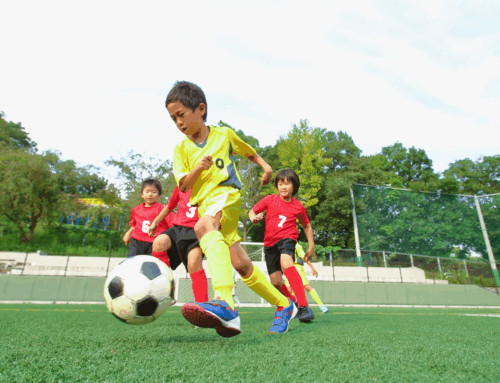Get our exclusive report. Download the iSport360 Club Switching Report Here – For Club Admins, Rec Leaders and Coaches.
Rise In Youth Sports Cost
Youth sports are often touted as essential for a child’s physical and social development. But behind the scenes lies a significant financial burden that many families struggle to bear. From registration fees to specialized equipment, the cost of participation in youth sports continues to rise.
Costs are increasing due to increases in facility and tournament fee costs. These costs are being passed along to the parents. While we can all discuss how high these costs are heading, let’s put some action behind it and discuss what you can do as a family to lower costs.
Key Factors Driving Up Costs
Club Memberships and Team Fees:
One of the primary contributors to the high cost of youth sports is the prevalence of club memberships and team fees. These organizations charge dues to cover expenses. Some of those expenses include facility rentals, coaching salaries, and administrative costs.
Tip: Identify what your player and your family want to get out of sports. There are more options besides club sports. Look for lesser cost clinics, school teams or community based teams.
Travel Expenses:
As youth sports have become increasingly competitive, travel has become a common occurrence for many teams. Travel expenses can include airfare, hotels, food, and more. Coaches and club admins may opt to stay closer to home to help reduce costs. Check before you sign up!
Tip: Opt to stay at a suite hotel where you can cook your meals and bring snacks. This will drive down your costs. Focus on tournaments that are driveable.
Equipment and Uniform Costs:
From soccer cleats to hockey sticks, the equipment required for youth sports can be prohibitively expensive. As children grow and advance in their sport, they often need to upgrade their gear, leading to ongoing expenses for parents.
Tip: If your player is new to the sport, consider buying gently used equipment from a friend. Who knows, you may even get it at no cost. See if you can borrow a uniform from the club or from a friend.
Coaching and Training Fees:
High-quality coaching and training are often seen as essential for success in youth sports, but they come at a cost. Private coaching sessions, specialized clinics, and skill development programs can be expensive, especially for families with multiple children participating in sports.
Tip: Don’t spring for private lessons until you know your player is committed. How to tell if your player is committed? Are they training on their own on a regular basis? You do not need high-end coaches for a player that is under 7th grade. See the commitment first, then see if it makes sense to invest. Also, make your session a small group, and your per-player cost should drop.
Facility Rentals:
Securing adequate practice and game facilities can be a significant expense for youth sports organizations. Whether renting gymnasiums, fields, or ice rinks, these costs are often passed on to parents through increased registration fees or fundraising requirements.
Tip: Hands are tied here on cost. Besides negotiating the best price to rent a space, you may want to shorten practice to 90 mins vs 2 hours, have them warm up ahead of time off field. As a parent, this cost is already set in your fees. The challenge is that this cost is usually the highest expense and has continued to increase.
Tournament, League and Event Fees:
Participating in tournaments and events is often a highlight of the youth sports experience, but it can also be a significant expense. Entry fees, facility rentals, and travel costs associated with attending these events can quickly add up for families.
Tip: Every event has a cost and those costs are increasing steadily over time. It is hard to reduce this cost for a family as it is part of the overall fee. As special events and opportunities pop up, you may have to say no and save on those. A 7th grader doesn’t need to travel to California for a lacrosse tournament.
What Can You Do to Reduce Cost?
The rising cost of youth sports is a complex issue driven by a combination of factors, including club fees, travel expenses, equipment costs, and specialized training. While youth sports can provide invaluable benefits for children, including physical fitness, teamwork skills, and character development, it’s essential to acknowledge and address the financial barriers that prevent many families from participating.
- Borrow equipment and a uniform.
- Say NO, yes, you read that correctly. Don’t go to every event that has an extra cost.
- Assess if your player even wants to play? Do they do things on their own? If they don’t, don’t add extra.
- Limit your player to 1 to 2 sports a season.
- Focus on clinics vs club teams. Clinics are usually less costly.
- Travel smart, bring food and snacks. Choose to only attend driveable tournaments.
Remember, your athlete will get out of it, what they put into it.
iSport360 is the only app that does it all for youth sports. For more information on what we do, click here.
About the author:
Amy Masters is a sports mom, coach, and club administrator. She has been coaching youth sports for more than 10 years. She started Jr Lions Field Hockey, the youth recreation program for the Hunterdon County community growing it from 40 players in year 1 to 150 players by year 3. A few years later, she saw the love and competitiveness grow then started Omega Field Hockey Club serving NJ and PA players. Before coaching, she was a collegiate field hockey player for Lock Haven University. In her spare time (lol), she is head of marketing for iSport360 and the co-editor of the Youth Sports Survival Guide. The Youth Sports Survival Guide is the largest youth sports newsletter in the world.
Learn more or request a demo of our youth sports software that is helping teams improve communication, organization and player development.
June 10, 2024





